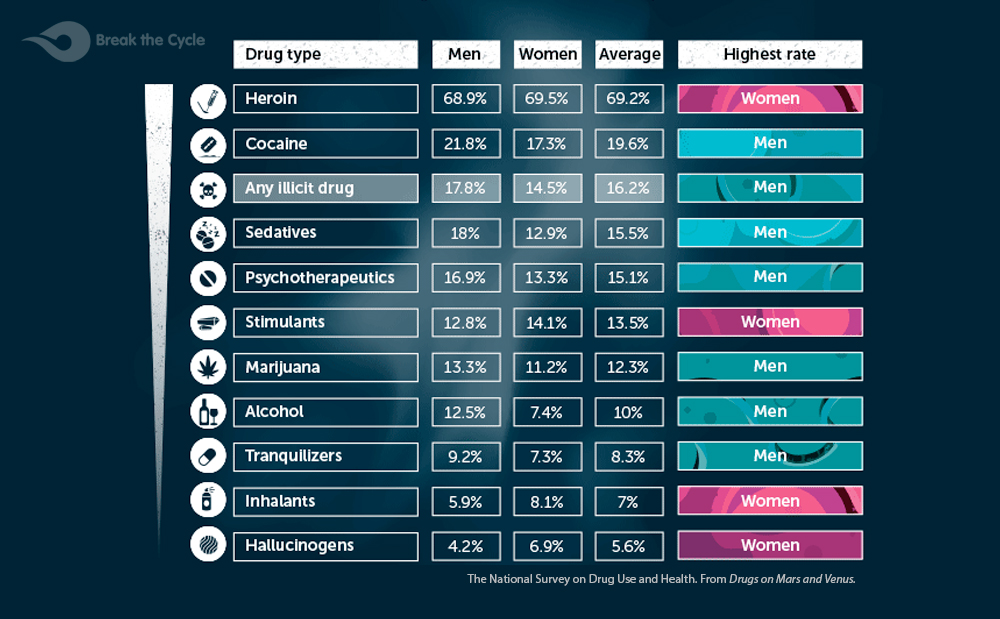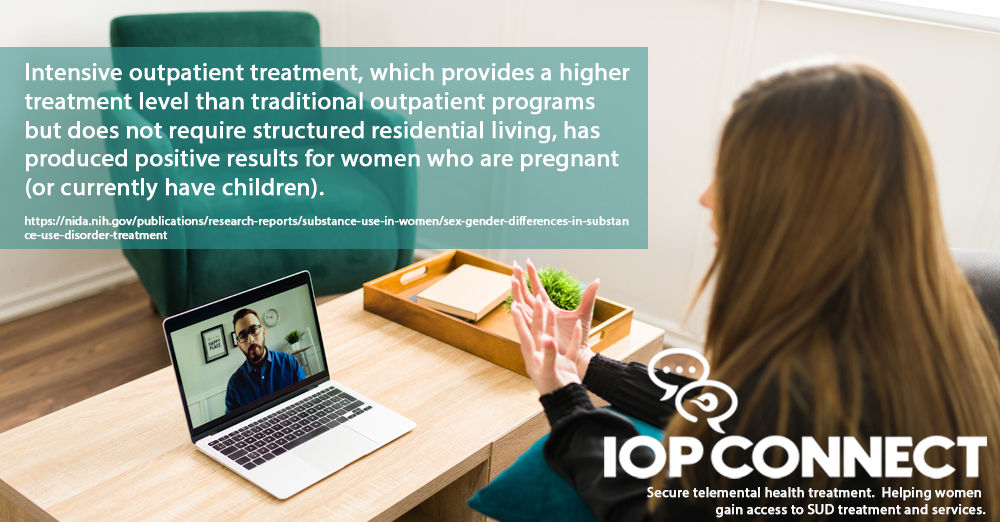
There are more men than women in treatment for substance use disorders. However, women are more likely to seek treatment for dependence on sedatives such as anti-anxiety and sleep medications.14 In addition, although men have historically been more likely to seek treatment for heroin use, the rate of women seeking treatment has increased in recent decades.154
Substance use disorders may progress differently for women than for men. Women often have a shorter history of using certain substances such as cocaine,155 opioids,42 marijuana,42,43,156 or alcohol.42,157,158 However, they typically enter substance use disorder treatment with more severe medical, behavioral, psychological, and social problems. This is because women show a quicker progression from first using the substance to developing dependence.159
NIDA. 2021, April 13. Sex and Gender Differences in Substance Use Disorder Treatment. Retrieved from https://nida.nih.gov/publications/research-reports/substance-use-in-women/sex-gender-differences-in-substance-use-disorder-treatment on 2024, March 21

Co-Occuring Mental Health Disorders
Many women with substance use disorders are also diagnosed with other mental disorders. This is important because interactions between illnesses can worsen the course of both. Patients who have both a substance use disorder and another mental health condition often have symptoms that are more persistent, severe, and resistant to treatment compared with patients who have either disorder alone. Both disorders should be treated at the same time to improve the likelihood of success. Although men are more likely than women to report both a mental health and substance use disorder within the past year,13 women are more likely to suffer from certain mental health conditions, such as depression,176 anxiety, post-traumatic stress disorder (PTSD),177 and eating disorders.178 Some women report using substances to relieve stress or negative emotions.179–181 In addition, women are more vulnerable to developing substance use or other mental health disorders following divorce, loss of child custody, or the death of a partner or child.10
Women, Violence, and Substance Abuse
More than 1 in 3 women have experienced physical violence at the hands of an intimate partner, including a range of behaviors from slapping, pushing, or shoving to severe acts such as being beaten, burned, raped, or choked.182 Victims of violence are at increased risk of chronic health conditions, including obesity, chronic pain, depression, and substance use.183 In recognition of the severity of violence against women and the need for a national strategy to address this issue, in 1994 Congress enacted the Violence Against Women Act to hold offenders accountable and to provide services to victims.184
NIDA. 2021, April 13. Other Sex and Gender Issues for Women Related to Substance Use. Retrieved from https://nida.nih.gov/publications/research-reports/substance-use-in-women/other-sex-gender-issues-women-related-to-substance-use on 2024, March 20
